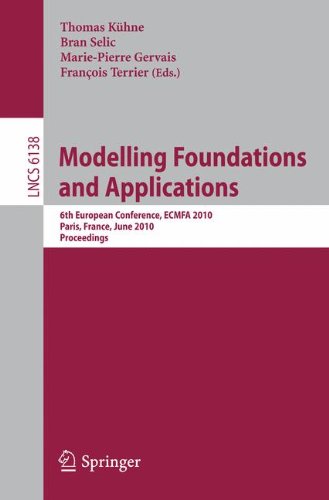

Most ebook files are in PDF format, so you can easily read them using various software such as Foxit Reader or directly on the Google Chrome browser.
Some ebook files are released by publishers in other formats such as .awz, .mobi, .epub, .fb2, etc. You may need to install specific software to read these formats on mobile/PC, such as Calibre.
Please read the tutorial at this link: https://ebookbell.com/faq
We offer FREE conversion to the popular formats you request; however, this may take some time. Therefore, right after payment, please email us, and we will try to provide the service as quickly as possible.
For some exceptional file formats or broken links (if any), please refrain from opening any disputes. Instead, email us first, and we will try to assist within a maximum of 6 hours.
EbookBell Team

0.0
0 reviews
ISBN 10: 3642135943
ISBN 13: 978-3642135941
Author: Thomas Kühne, Bran Selic, Marie Pierre Gervais, Francois Terrier
The 2010 European Conference on Modelling Foundations and Applications (ECMFA 2010) was dedicated to assessing the state of the art and the state of the practice in model-based engineering. It was the sixth edition in the - ries of conferences previously known under the title “European Conference on Model-DrivenArchitecture–FoundationsandApplications(ECMDA-FA).”The name changere?ects the de facto broadening of the conference scope beyondthe R R MDA initiative of the Object Management Group to cover all major advances related to model-based engineering approaches. These proceedings, like the ones from previous editions in the conference series, will undoubtedly serve as a reference to all who follow model-based engineering theory and practice. The included papers document the steady e- lution of model-based development methods into a mature discipline, with we- established standards, industrial-strength tools, and emerging theoretical fo- dations. They also serve to illustrate that model-based approaches are capable of signi?cantproductivity andquality improvementsrelativeto moretraditional development methods.
what foundation do models use
european conference on modelling foundations and applications
what is a foundation model
foundation modeling
modelling applications
Tags: Thomas Kühne, Bran Selic, Marie Pierre Gervais, Francois Terrier, Modelling Foundations